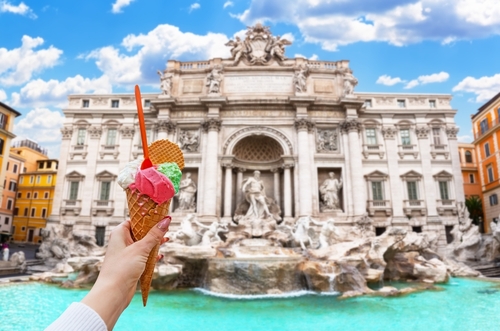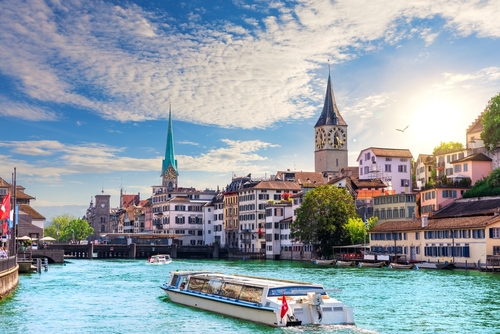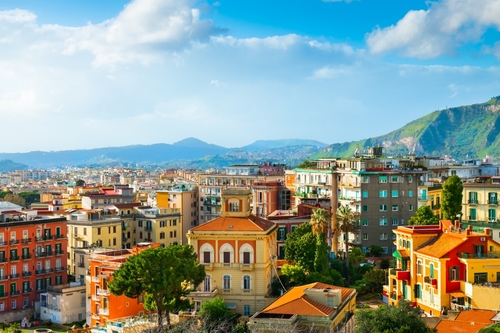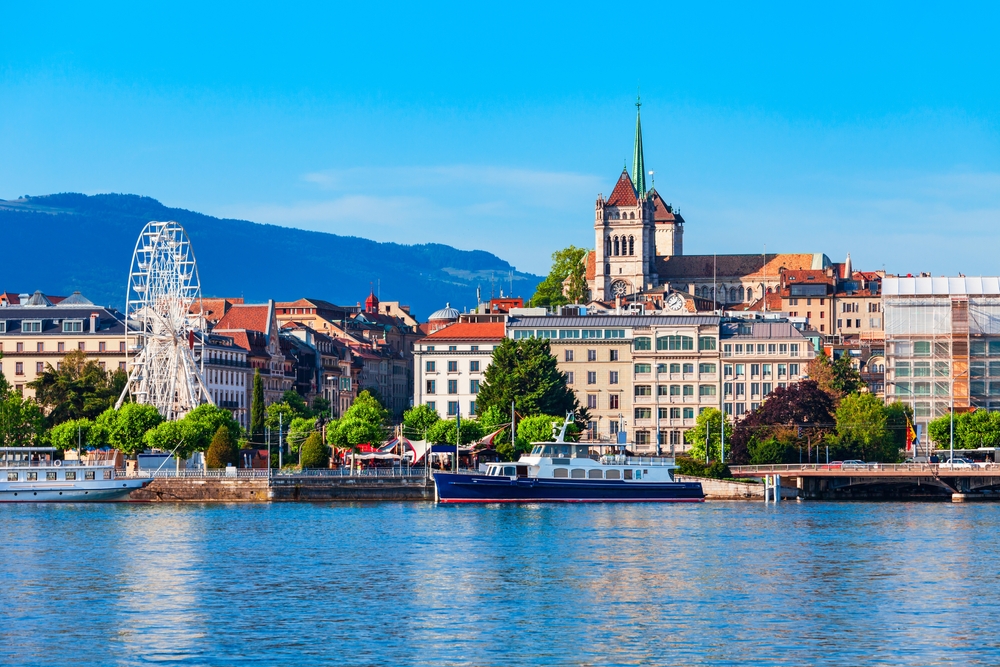With overcrowding becoming a top concern for travellers, and around 63% more likely to seek quieter, less crowded places, we analyzed Europe’s most overcrowded Instagram destinations for 2025 to help travellers make more informed choices.
The study, conducted by Heepsy, uses a composite Overcrowded Score that equally weighs tourist density (tourists per km2) and Instagram hashtag counts to reflect both physical congestion and social media popularity. It also highlights each city’s main tourist attraction as a congestion hotspot. All data were standardized, with higher scores indicating greater overall overcrowding.
| City & Country | Tourists per km2 | Instagram Hashtags | Overcrowding Score |
| Switzerland, Geneva | 502K | 4.9M | 100.0 |
| France, Paris | 476K | 1.4M | 98.9 |
| Italy, Rome | 27K | 31M | 97.8 |
| Albania, Tirana | 280K | 5M | 96.6 |
| Switzerland, Lucerne | 251K | 1M | 95.5 |
| Switzerland, Zurich | 226K | 4.4M | 94.4 |
| Spain, Barcelona | 256K | 1.1M | 93.3 |
| France, Lyon | 125K | 11.6M | 92.1 |
| Sweden, Stockholm | 81K | 15.2M | 91.0 |
| Italy, Naples | 119K | 10.5M | 89.9 |
To access the full research, please follow the link.
Geneva ranks 1st with a score of 100, showing the highest tourist density in Europe. The city’s tourist-to-area ratio of 502,197 visitors per square kilometer is significantly higher than other ranked cities. Geneva’s compact urban area of 15.9 km2, along with 8 million annual visitors, creates concentrated congestion around the Jet d’Eau Fountain.
Paris comes in 2nd with a score of 98.9, driven by high visitor numbers. The French capital receives 50 million tourists annually, more than any other city in the study. Compared to Geneva, Paris has a larger urban area of 105 km2 but maintains a high tourist-to-area ratio of 476,190 visitors per square kilometer.
Rome lands in 3rd with a score of 97.8 and leads all cities with 31 million Instagram hashtags. Rome has the largest urban area among the top 10 cities, which would typically reduce overcrowding, but its social media popularity and 35 million annual visitors create significant congestion. Rome generates over six times more Instagram hashtags than Geneva.

Tirana is 4th with a score of 96.6. Albania’s capital shows a tourist-to-area ratio of 279,904 visitors per square kilometer, with 11.7 million tourists in its 41.8 km2 urban area. Tirana has 5 million Instagram hashtags, more than Paris, showing stronger social media engagement relative to its physical size.
Lucerne ranks 5th with a score of 95.5, the second Swiss city in the rankings. Lucerne has a lower Instagram hashtag count but maintains a high tourist-to-area ratio of 251,337 visitors per square kilometer. With 9.4 million visitors to its smaller urban area, Lucerne experiences significant congestion around the Chapel Bridge.
Zurich follows in 6th with a score of 94.4, completing Switzerland’s strong presence in the rankings. Zurich has 20.8 million visitors, but a lower tourist-to-area ratio of 226,382, compared to Geneva, due to its larger urban footprint of 91.9 km2. Lake Zurich serves as the primary tourist hub. Zurich has 4.4 million Instagram hashtags, fewer than Rome but more than Paris.

Barcelona places 7th with a score of 93.3. The Spanish city has 26 million visitors and a tourist-to-area ratio of 256,410 visitors per square kilometer. Barcelona’s ratio is lower than Geneva’s but higher than Rome’s. With only 1.1 million Instagram hashtags despite 26 million visitors, Barcelona shows a disconnect between physical tourism and social media presence.
Lyon is 8th with a score of 92.1. Lyon shows the largest gap between visitor numbers, at 6 million, and Instagram presence, with 11.6 million hashtags, among the top cities. Lyon has a tourist-to-area ratio of 125,339 visitors per square kilometer across its 47.9 km2 urban area, indicating stronger social media presence than physical tourism.
Stockholm ranks 9th with a score of 91. The Swedish capital has the second-largest urban area in the top 10, at 188 km2, resulting in a lower tourist-to-area ratio of 81,383 visitors per square kilometer. Stockholm generates 15.2 million Instagram hashtags with 15.3 million visitors, showing nearly a 1:1 ratio between physical visitors and social media tags.
Naples rounds out the top ten with a score of 89.9. The Italian city has a tourist-to-area ratio similar to Lyon but generates fewer Instagram hashtags. Naples generates 10.5 million Instagram hashtags, showing a more balanced relationship between physical visitors and social media presence than cities like Lyon and Stockholm. Its ratio is only about one-fifth of Geneva’s.

Tabi Vicuña, Founder of Heepsy, commented on the study: “The growing disconnect between social media popularity and physical tourism capacity represents a fundamental challenge for European destination management. When compact historic centers attract millions of visitors into spaces never designed for such volumes, the resulting congestion threatens both visitor experience and local quality of life. Cities with balanced visitor-to-hashtag ratios tend to manage tourism more sustainably than those with extreme disparities in either direction. The concentration of certain countries in top rankings signals the need for coordinated regional approaches that distribute tourism benefits while preserving authentic experiences that initially attracted visitors.”





